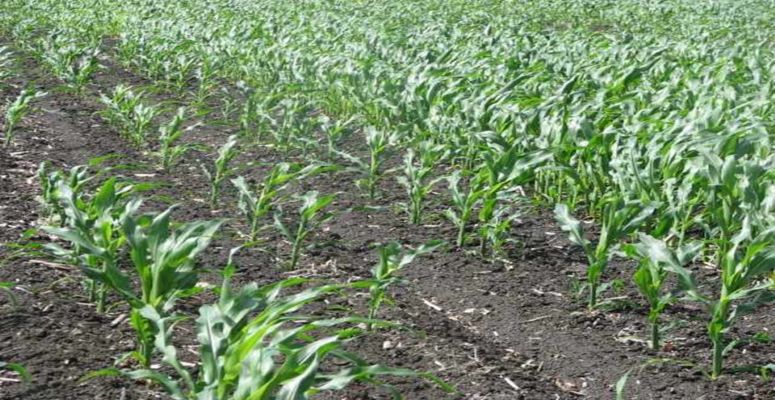August 25, 2022

LG Seeds Agronomist Matt Teply has spent his entire career on the High Plains, helping farmers determine which corn hybrids and soybean varieties pair well with the dry weather and the alkaline soils of the region. He has seen firsthand the troubles high soil pH can cause.
“There’s always a conversation around soil pH and water because they have a major yield impact in the western states,” Teply says. He explains there’s a distinct difference in hybrids and varieties that can handle the alkaline-prone higher-calcium, higher-magnesium (calcareous) soils and those that can’t.
Teply is now in the eighth year of trials that have helped him guide his farmer customers in determining what LG Seeds products can handle higher-alkaline soils that plague some western farmers. He’s also pleased with the influx of germplasm and new products in recent years, an influx that motivated him to conduct his trials. “Many products can handle higher-pH soil. Whether or not they can handle the ‘badger dirt’ of the white clay hills is the bigger question,” Teply explains.
The trouble with high-pH soils
The porous, chalk-like calcareous soils that Teply is running trials on are typically found in semi-arid to arid regions of the country, like the western High Plains. He details that some of his biggest problem areas include western Nebraska, eastern Colorado and all the way down to the Panhandle of Texas, though he says incidences dissipate as one heads south.
Teply generalizes soil pH at or above 7.2 as the point when the availability of nutrients diminishes. “The macronutrient most affected by higher-pH soils is phosphorus,” he says. “When phosphorus is tied up in the soil, it impacts many plant growth processes from healthy roots to the processes within the actual corn or soybean plant critical to daily operation.” The result is stunted plant growth and patchy yellowing associated with iron deficiency chlorosis.
Spring weather comes into play
Teply says spring weather can make a major difference when it comes to withstanding high pH environments of the West. “If we have a consistent early growing season and plants root down and develop at a normal pace, the issues we see from these high-calcium, high-magnesium soils don��’t seem to be as bad,” he says.
The 2022 growing season has been particularly challenging. It featured wild air and soil temperature swings in the spring and historic drought across much of the region. “Conditions are so bad in some areas that some corn was already being chopped for silage in late July,” he says.
Steps you can take for alkaline soils
“The first step is hybrid selection because we know from testing that some hybrids are going to handle high soil pH better than others,” Teply says. “A solid starter fertilizer program and use of fulvic acid can help promote early root growth and help the corn crop get started.”
The most important thing, according to Teply, is to talk with your local LG Seeds agronomist. “We’ve got a good handle on what works in higher-pH situations and can help you place the right product on the right acre,” he says. “If you’re not doing that, you’re not giving yourself a chance from the get-go.”
Source: LG Seeds, who is solely responsible for the information provided and is wholly owned by the source. Informa Business Media and all its subsidiaries are not responsible for any of the content contained in this information asset.
Read more about:
Crop ConditionsYou May Also Like




